If you write music or make beats you’ll probably have asked yourself how you can spice things up in the rhythm department. The answer?
Math.
More specifically a little doohickie called a Euclidean algorithm, which churns out Euclidean rhythms.
Euclidean rhythms are an awesome way to create interest in percussive and melodic patterns, and they’re being used more and more in many forms of electronic and experimental music.
Whether you have a burning desire to learn more about mathematical connections in music, or just want to pick up some creative tips, we’ve got you covered.
Let’s begin by going back in time…
History of the Euclidean Algorithm

The whole story about Euclidean rhythms has its roots back around 300 B.C, with a chappy named Euclid.
Euclid (pronounced yoo-klid) was a tip-top mathematician in ancient Greece. He gave the Western world much of the bits and pieces that now make up modern geometry, and one of these elements is the backbone to making cool rhythms.
Euclid's algorithm is a method for working out the greatest common divisor (GCD) of two numbers (or integers, if you want to use the fancy math term). The GCD is the largest number that divides the two integers without a remainder.
Fast forward a couple thousand years, and a scientist named Eric Bjorklund was working on a spallation neutron source particle accelerator. He needed a gate to open a certain number of times within a given window of time. What's more, he needed to space these openings as evenly as possible.
His solution was an algorithm that gave him the timings he needed.
What does all this have to do with music?
A couple of years later a Canadian computer scientist named Godfried Toussaint showed that Bjorklund's algorithm works in a very similar way to Euclid's algorithm. Furthermore, he demonstrated that this algorithm, when reimagined in a musical context, can produce the kinds of rhythms found in many diverse styles of world music.
And so the Euclidean rhythm was born.
It's important to note here that while the term ' Euclidean rhythms ' is a fairly new one, the rhythms it describes (and those generated when using the Euclidean algorithm) have been around for thousands of years. The party has been going on for a long time; someone came late, stuck a label on it, and now we can re-create our own versions of the party.
What is a Euclidean Rhythm?
A Euclidean rhythm is generated by distributing a set number of beats across a specific time interval as evenly as possible. The resulting pattern sounds complex and interesting, but it's all generated by an algorithm.
These rhythms are used across many diverse genres of music, and patterns generated by euclid's algorithm can be a valuable resource for composers and beatmakers looking to add depth and variety to their work. Experimental ambient artists in particular are using this technique to expand their sound.
Because it all works using complex math (at least, it seems complex to me), let's take a really simple drum pattern - the classic 'four on the floor' - and describe it in terms of a euclidean rhythm.
In this example you have 4 kick drum hits spaced out evenly over 16 possible positions (a measure of 4/4 divided into 16th notes):
X . . . X . . . X . . . X . . .
In this pattern "X" represents kick drum hits, and "." represents silence, or empty time intervals. In a Euclidean algorithm this would be expressed as (4, 16), where 4 is the number of hits and 16 is the total number of steps in the pattern.
It's wildly oversimplified, but it'll help you get your head around the idea that a euclidean rhythm takes a number of events, or pulses (H) and distributes them as evenly as possible over a given window of time (T). Euclidean rhythms are always expressed as (H, T) .
Let's look at another example. This time we're dividing 6 pulses across 16 steps, or (6, 16):
X . . X . X . . X . . X . X . .
And here's what it sounds like:
Bit more spicy, right? But it's also something you've heard a zillion times before.
As mentioned earlier, euclidean patterns themselves aren't necessarily new - they're often found in traditional musical rhythms you hear in world music, jazz, and other genres. But the techniques used to create them are.
Understanding Euclidean Rhythms
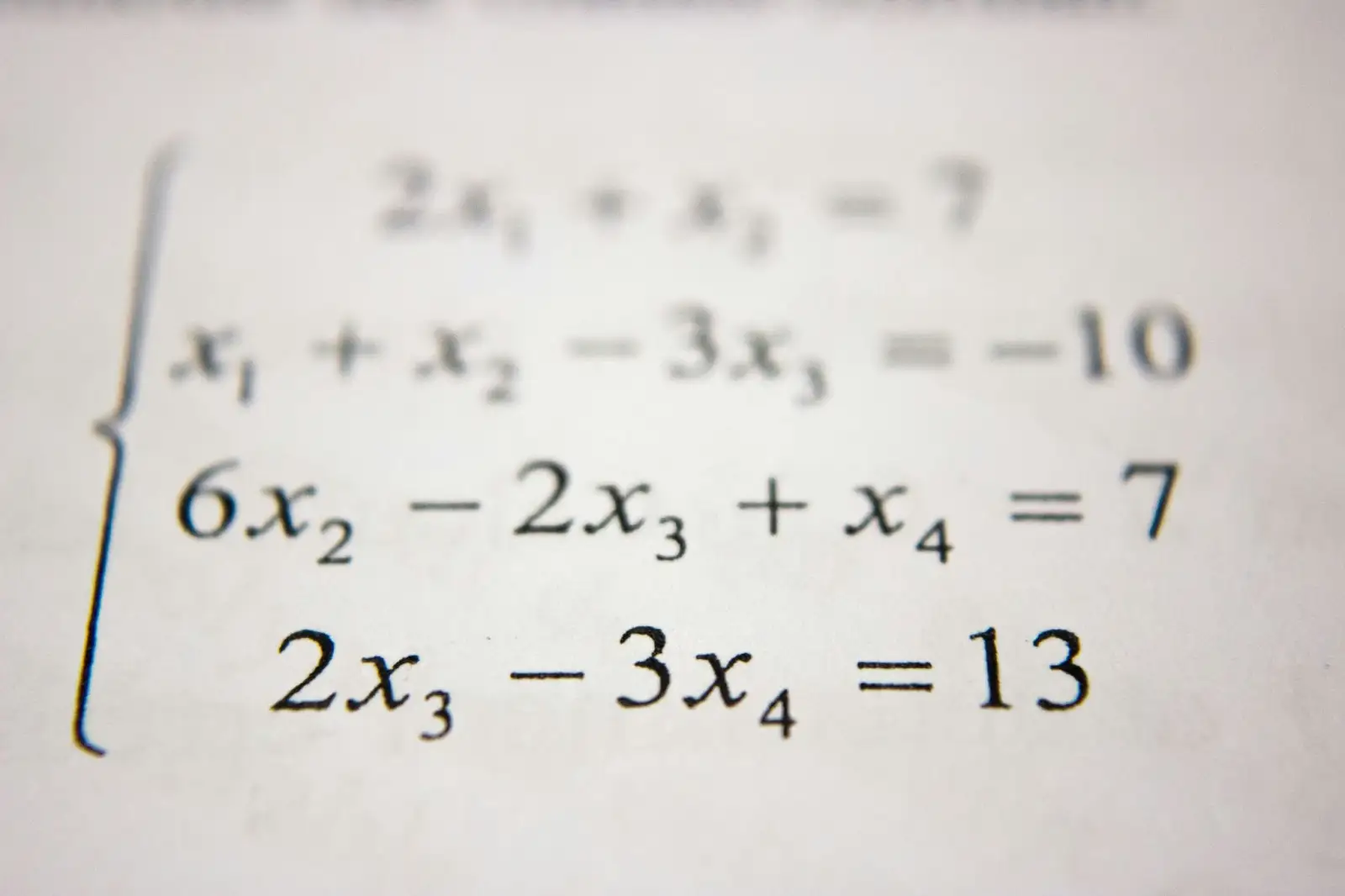
Here's where we get into some heavy math stuff! But I'll keep it simple, for folks like me.
To work out a Euclidean rhythm you start with a list of 1s and 0s that represent your total number of steps (T) . The 1s represent a pulse, onset, or a beat (H) , and the 0s represent silence.
Taking our first example from above - the four-on-the-floor, or ( H=4T=16) , we'd start with this:
1, 1, 1, 1, 0, 0, 0, 0, 0, 0, 0, 0, 0, 0, 0, 0
From here we move the last four zeroes and adjoin them to the ones, like this:
[10], [10], [10], [10], 0, 0, 0, 0, 0, 0, 0, 0
The italicized zeroes at the end are the remainder, and our goal is to get as many of the remainders attached to a 1 as possible, while keeping the bracketed sets matching. When there's only one, or no remainder we're done. The next step then is to move the final four zeroes and add them to the bracketed sub-sets at the front:
[100], [100], [100], [100], 0, 0, 0, 0
And do this again:
[1000], [1000], [1000], [1000]
Since there's no remainder, the calculations are finished. If we remove the brackets it's easier to see the final sequence:
1 0 0 0 1 0 0 0 1 0 0 0 1 0 0 0
Here's the same sequence in a more familiar setting:

Finally, if you want the hits to have a duration rather than be single beats, simply add up the number of pulses between each 1:
4, 4, 4, 4
OK, let's do the same thing but with our slightly more complex (6, 16) rhythm. Here's the initial list representing our hits (H - the 1s) and the overall length of the sequence (T):
1, 1, 1, 1, 1, 1, 0, 0, 0, 0, 0, 0, 0, 0, 0, 0
Move the last zeroes to the hits (H):
[10], [10], [10], [10], [10], [10], 0, 0, 0, 0
Move the remainders ( italicized ):
[100], [100], [100], [100], [10], [10]
And again:
[10010], [10010], [100], [100]
One last time:
[10010100], [10010100]
And we're done!
1 0 0 1 0 1 0 0 1 0 0 1 0 1 0 0

And if we wanted note lengths they'd be 3, 2, 3, 3, 2, 3, where each number represents x times the smallest division of the sequence - in this case 16th notes. So this sequence would be a combination of dotted and regular eighth notes .
Obviously these are very simple examples to help explain the concept of euclidean rhythms. We'll take a look at how you can go nuts with them in a second, but before we do, let's take a detour.
Rotation Station

So far we've looked at two different parameters in euclidean rhythms - hits (H) and number of steps (T). There's a third value that can significantly alter how a sequence will play: rotations.
In the above examples the first step of each rhythm falls on the downbeat of each measure . By rotating, or offsetting, the pattern, the same (H, T) values can generate more complex-sounding rhythms.
Taking the (6, 16) example from above I'm going to 'rotate' the sequence so the hit on the downbeat is actually the second hit of the sequence:
1 0 0 1 0 1 0 0 1 0 0 1 0 1 0 0 becomes 1 0 1 0 0 1 0 0 1 0 1 0 0 1 0 0
or:
3, 2, 3, 3, 2, 3, becomes 2, 3, 3, 2, 3, 3
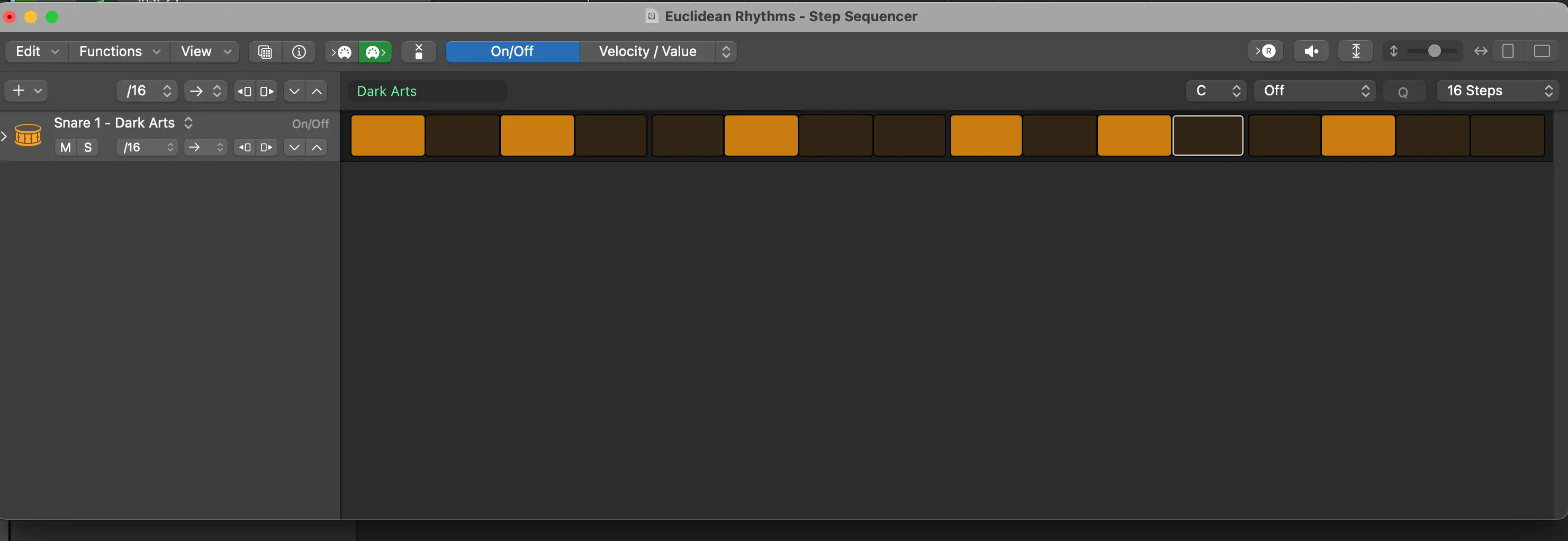
Rotations are a great technique for generating interesting variations of rhythms from the same H and T parameters.
What's cool is you can layer the same sequence, with each layer having a different rotation, to create polyrhythms.
In the example below, I've layered the same (6, 16) rhythm three times using all the offsets available:
A) 3, 2, 3, 3, 2, 3
B) 2, 3, 3, 2, 3, 3
C) 3, 3, 2, 3, 3, 2

Placing these more complex rhythms against a regular beat helps ground the whole idea:
Euclidean Rhythms - Taking it to the Next Level
We've been looking at very basic beats, falling into a standard measure of 4/4, subdivided by 16th notes.
You can also create Euclidean rhythms in 3/4 or 6/8, or use different subdivisions to affect the timing of the patterns.
However, if you generate multiple sequences using different (H, T) parameters the resulting rhythms, when layered together, will create a complex and interesting tapestry. Using a different (T) length for each sequence means you're in effect working in multiple time signatures at once , and the loops will interact with each other differently on every pass.
Here's an example with a snare playing a (6, 16) pattern (the one we all know and love), with a synth playing a (7, 11) pattern:
Adding a kick drum helps establish a regular pulse:
All this is fun stuff, and can create really fascinating ideas to use in a track. But using the above long-form method to figure out all those Euclidean rhythms could end up hurting your head.
Luckily, there's software to help.
The Euclidean Sequencer
There's quite a few software options available to help you generate patterns for your music, and as Euclidean rhythms become more popular I'm sure more developers will jump on the bandwagon.
At the most basic level is a browser-based Euclidean rhythm generator . You type in the desired number of hits, or notes, along with the total time window and it generates an image showing the sequence, along with a midi playback of the result.
The sound isn't great on this, but it's a free and easy way to visualize your Euclidean rhythms. You'll just have to manually take what you see and put it into your DAW.
If you're an Ableton Live user, Polyrhythmus is a great Euclidean sequencer available as a Max for Live module. You can use it to generate rhythms as well as pitch-based material like melodies and arpeggios.
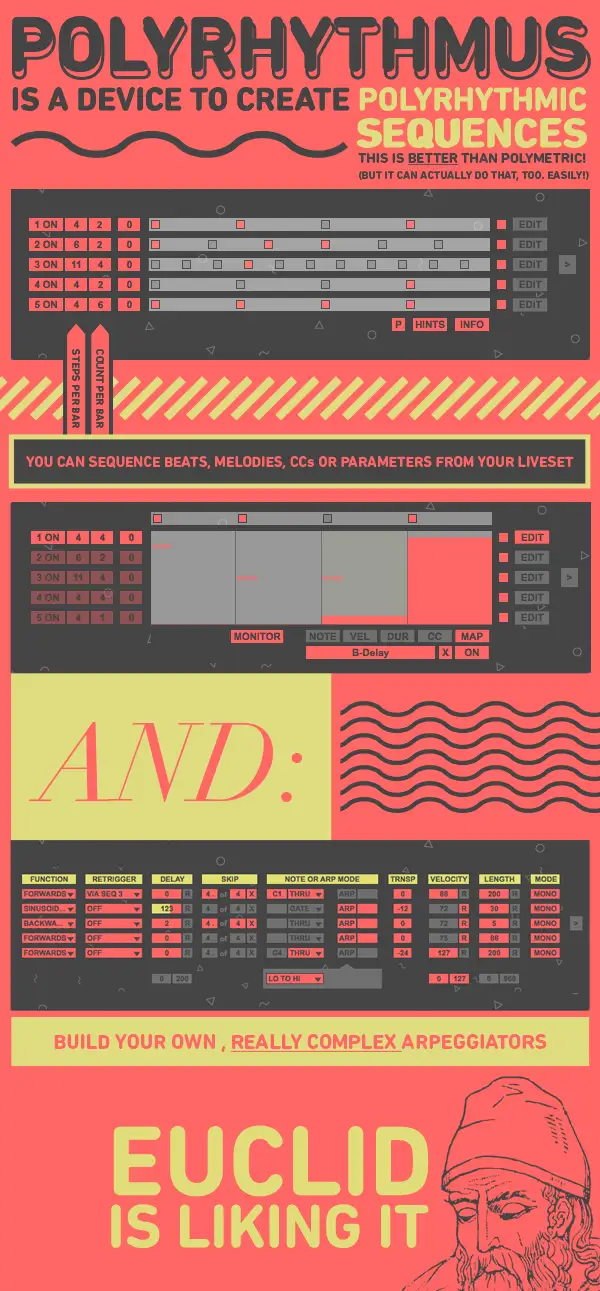
For non-Ableton producers there's HY-RPE2 which has a Euclidean sequencer engine, offering full MIDI control over your Euclidean rhythms. All sorts of parameters can be fiddled with, and the developers encourage you to try out the demo before buying.
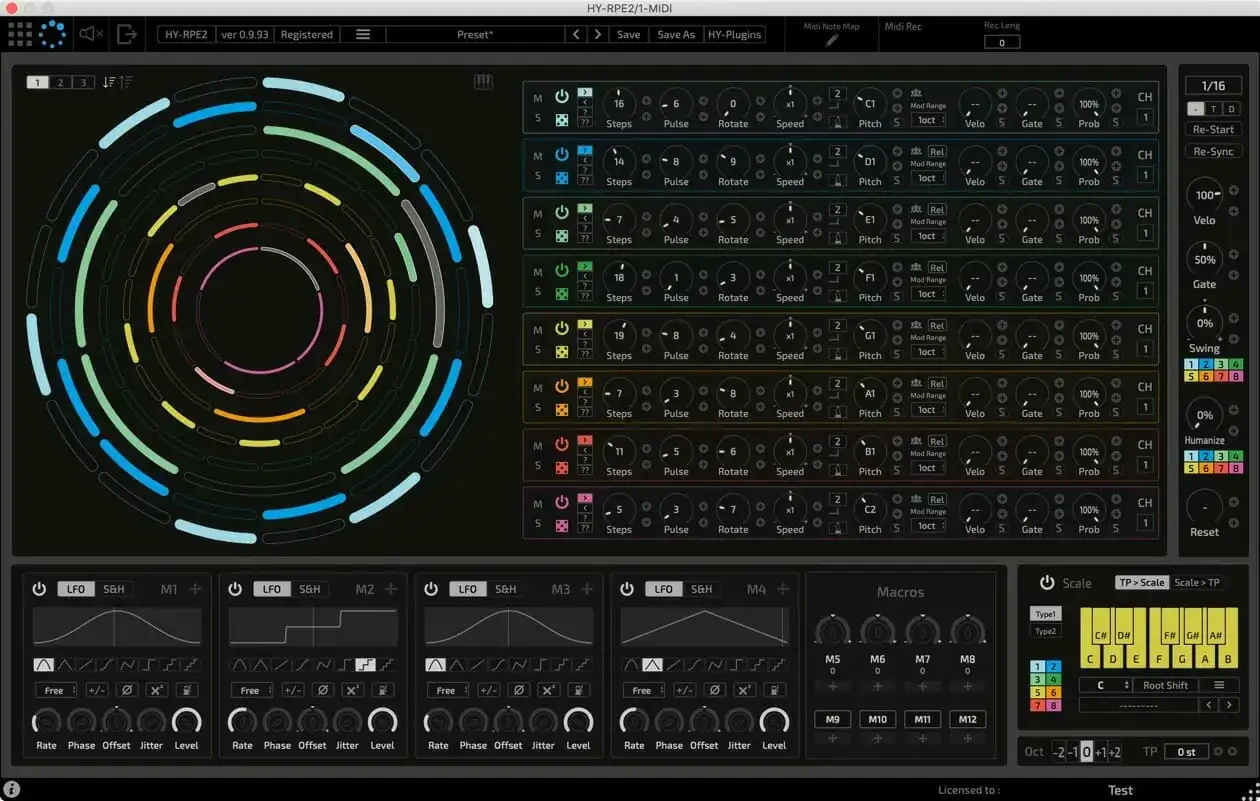
Finally, ADSR have the reasonably-priced Orbit to help you on your Euclidean journey. It's a sequencer that works as a MIDI plugin on any synth, and comes with a 30 day free trial.
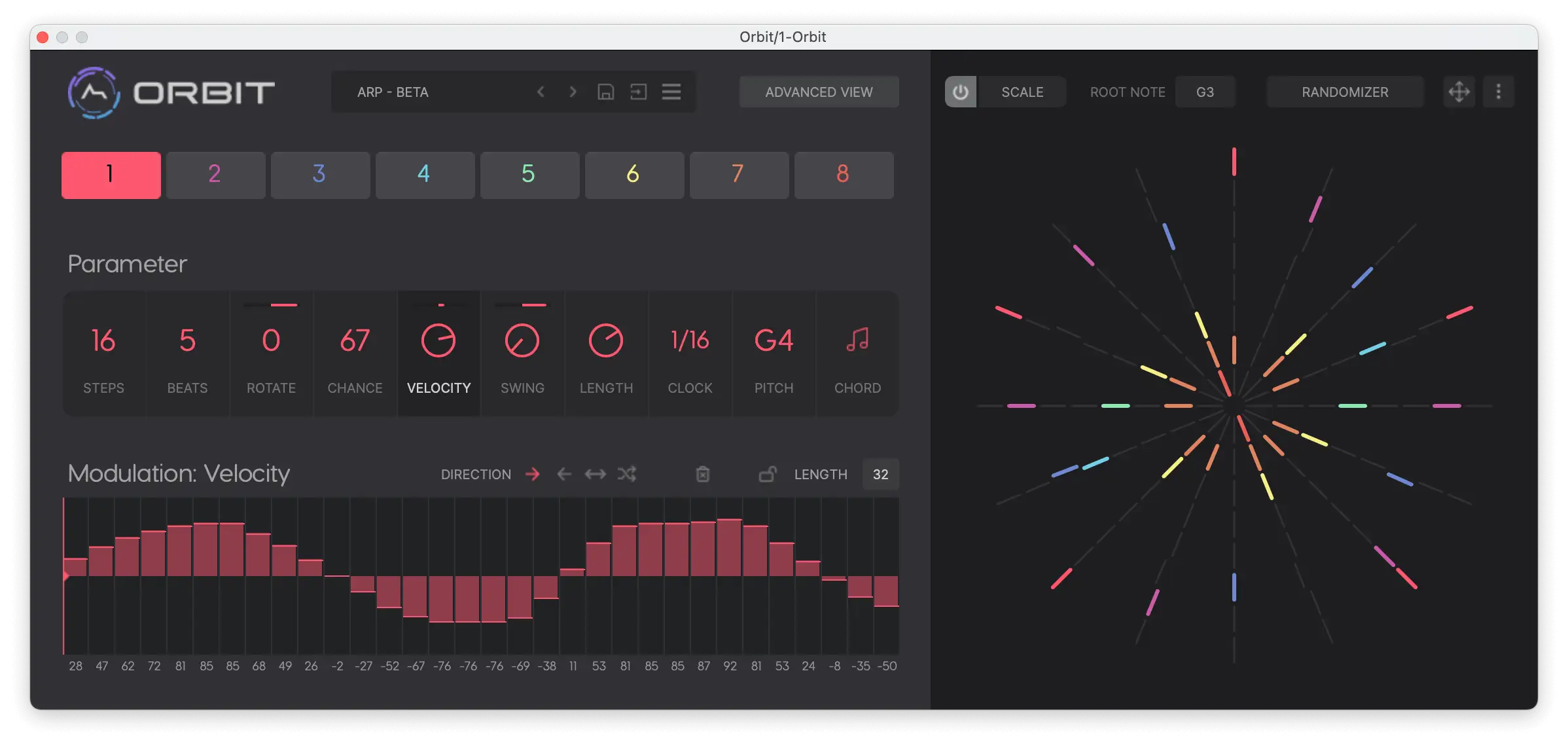
Conclusion
By now you should have a good sense of the concept behind Euclidean rhythms. Getting a glimpse of the mathematical connections between music and geometry is always fascinating, but on a more practical level, Euclidean rhythms can stimulate your creative process and take your music in new directions.
Whether you do everything by hand or find a sequencer you enjoy using, the more you practice working with these techniques the easier it will get.
Experiment, play around, and have fun. Don't get too hung up on the process or the purity of the math. Use your ears, not an algorithm, to judge if something sounds good.
Now go forth and Euclid up that music!





